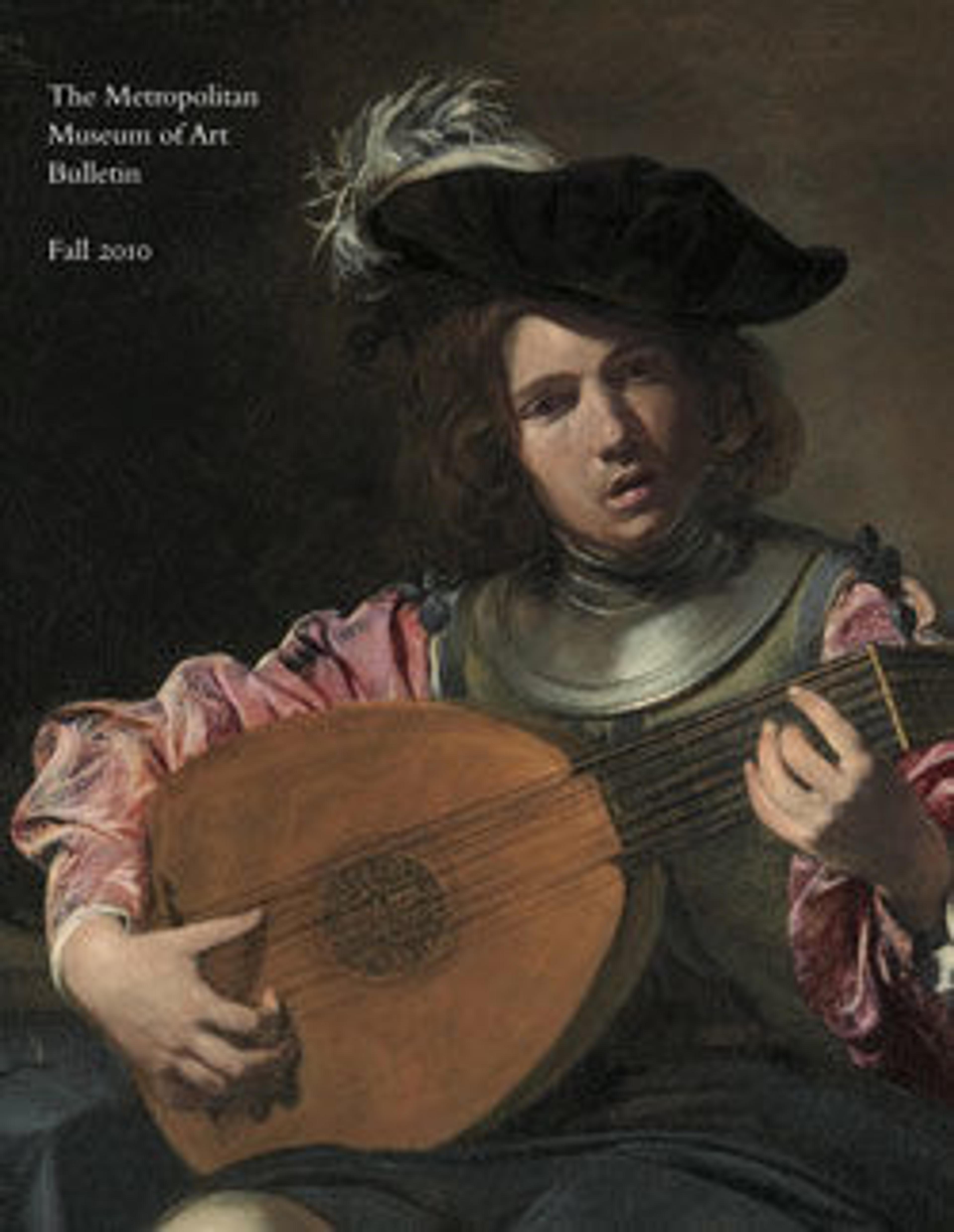Monstrous male figure
In the world of the ancient Near East, images and beings that combined human and animal qualities were thought to possess supernatural powers. This small yet potent figure, with its human face and serpentine-scaled body, probably represents such a creature, enlivened and charged with magical efficacy whether propitious or demonic. The monstrous figure’s most enigmatic and distinctive features are the prominent scar across its face and the two holes pierced into its upper and lower lips. The scar may indicate that the figure was defaced, and the holes suggest that the lips may have been sealed, literally. Taken together, the scar and the sealed lips imply that the figure portrays a decommissioned being whose power is no longer operational. Having served its purpose, it may have been ritually muted and “killed.” The unusual form of composite construction used to create the figure, achieved by using tangs to join together several sections of differing materials and colors, further enhance its powerful effect. As is true of so many great works of art from the ancient Near East, the forcefulness of the rendering and the unsettling imagery work to make the figure appear much larger than its actual size.
Artwork Details
- Title: Monstrous male figure
- Period: Bronze Age
- Date: ca. late 3rd–early 2nd millennium BCE
- Geography: Bactria-Margiana or eastern Iran
- Culture: Bactria-Margiana Archaeological Complex
- Medium: Chlorite, calcite, gold, iron
- Dimensions: 4 1/8 × 2 1/16 × 1 3/8 in. (10.4 × 5.2 × 3.5 cm)
- Credit Line: Purchase, 2009 Benefit Fund, Friends of Inanna Gifts, and Mr. and Mrs. Horiuchi Gift, 2010
- Object Number: 2010.166
- Curatorial Department: Ancient West Asian Art
More Artwork
Research Resources
The Met provides unparalleled resources for research and welcomes an international community of students and scholars. The Met's Open Access API is where creators and researchers can connect to the The Met collection. Open Access data and public domain images are available for unrestricted commercial and noncommercial use without permission or fee.
To request images under copyright and other restrictions, please use this Image Request form.
Feedback
We continue to research and examine historical and cultural context for objects in The Met collection. If you have comments or questions about this object record, please contact us using the form below. The Museum looks forward to receiving your comments.
